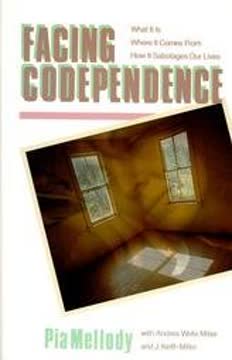Key Takeaways
1. Codependence: A Shame-Based Disease with Five Core Symptoms
I believe that these suffering people are in the grip of a serious underlying disease called codependence (or codependency).
Understanding Codependence. Codependence is a painful and crippling disease, often masked by outward adequacy, that stems from childhood experiences in dysfunctional families. It's characterized by magnified or minimized emotions, a compulsion to please others, and a deep-seated belief that one must be "perfect" to quell overwhelming internal feelings. This disease can lead to severe physical and mental health issues, including despair, "accidents," cardiovascular problems, and even suicide, though it's rarely named on death certificates.
Core Symptoms Defined. Pia Mellody identifies five core symptoms that make the disease easier to understand and address. These symptoms manifest at extreme ends of a spectrum, from complete absence to overwhelming presence, and profoundly impact an individual's relationship with themselves and others. Recognizing these extremes in one's own life is the crucial first step toward healing.
The Shame Core. At its heart, codependence is a shame-based illness. This means that an individual's sense of self-worth is deeply damaged, leading to feelings of being "less than" or, conversely, arrogantly "better than" others. This core shame, often induced during childhood abuse, drives many of the dysfunctional behaviors and emotional responses seen in codependents, making recovery difficult until this underlying shame is addressed.
2. Dysfunctional Parenting Warps a Child's Natural Self
When a child is not allowed to be his or her authentic self, the healthy ability to adapt and change is misdirected, and the child is forced to begin the enormous adaptation process into codependence.
Natural Child Characteristics. Children are born with five natural, authentic characteristics: they are valuable, vulnerable, imperfect, dependent, and immature. Functional parents nurture these traits, guiding children to become self-esteeming, protected, accountable, interdependent, and age-appropriate adults. This nurturing environment allows children to develop a healthy sense of self and their place in the world.
Dysfunctional Distortion. In dysfunctional families, these natural characteristics are either ignored or attacked, creating intense shame. For example, a child's natural imperfection might be met with excessive criticism, leading them to feel "less than" or to develop an arrogant, grandiose facade. The child's inherent self-centeredness, boundless energy, and adaptability—tools for healthy development—are instead misdirected to survive the abuse, forcing them into codependent patterns.
Survival Traits Emerge. To cope with the overwhelming feelings of worthlessness and shame, children develop dysfunctional survival traits. These traits, such as being "less-than" or "better-than," "too vulnerable" or "invulnerable," "bad/rebellious" or "good/perfect," "too dependent" or "antidependent/needless/wantless," and "chaotic" or "controlling," are direct adaptations to the abusive environment. These survival mechanisms, while protective in childhood, become the core symptoms of codependence in adulthood, perpetuating a cycle of pain.
3. The Five Core Symptoms Sabotage Adult Lives and Relationships
During my recovery process I realized that the five core symptoms described in the previous chapter were sabotaging my relationships with others and with myself.
Negative Control's Grip. Codependents often engage in negative control, attempting to dictate others' realities (their appearance, thoughts, feelings, or behaviors) for their own comfort, or allowing others to control them. This stems from impaired self-esteem and boundaries, where one's reality blends with another's. For instance, a codependent might argue, rationalize, or deny to control what others think of them, believing this will restore their own fragile self-esteem.
Resentment's Cycle. Resentment, a secondary symptom, is the act of clinging to anger and a need for revenge or punishment for perceived slights. This arises from blows to a codependent's already low self-esteem, making them feel shamed. The person resented becomes a "Higher Power," consuming obsessive thoughts about getting even. This cycle, however, only intensifies isolation, shame, pain, and anger, driving away those the codependent wishes to keep close.
Distorted Spirituality and Avoidance. Codependence sabotages spirituality by making it difficult to connect with a power greater than oneself. If one feels worthless, they may deem themselves unworthy of a Higher Power; if grandiose, they become their own. Additionally, codependents often avoid reality through addictions (chemical, sex, work, love, eating disorders), physical illness (somatoform disorders), or mental illness (psychotic behavior). These serve as coping mechanisms to medicate or escape the intolerable pain and confusion stemming from unacknowledged childhood trauma and the internal conflict between an adult body and an immature inner self.
4. Abuse Induces a "Shame Core" and Skewed Thinking
I have come to believe that when a caregiver abuses a child, the caregiver is out of touch with his or her own healthy shame.
The Mechanism of Induced Feelings. When an abusive caregiver, out of touch with their own healthy shame, repeatedly abuses a child while denying or being irresponsible with their feelings, those intense feelings (shame, anger, fear, pain) are "induced" into the child. This is akin to electrical induction, where current in one coil induces current in another nearby. The child, lacking developed internal boundaries, absorbs these overwhelming emotions, which then form a "shame core" within them.
Carried Feelings Manifest. These "carried" feelings from childhood manifest in adulthood as overwhelming emotional reactions disproportionate to current situations. For example, carried anger becomes rage, carried fear becomes panic or paranoia, and carried pain leads to hopelessness or suicidal thoughts. This induced shame, in particular, diminishes a person's inherent worth, making them feel "less than" others and forming the very heart of codependence.
Skewed Thinking's Role. Beyond carried feelings, the experience of abuse damages a codependent's thinking process, leading to inaccurate interpretations of incoming data. A compliment might be perceived as sarcasm, or a neutral comment as criticism, triggering intense, seemingly irrational emotional responses. This skewed thinking, combined with the shame core, creates a chaotic internal world and external relationships, as codependents genuinely believe their distorted perceptions are reality.
5. Defense Mechanisms Mask Childhood Trauma and Current Dysfunction
But as we grew up, these helpful and lifesaving defenses often moved beyond the necessary function of protection and turned into unyielding barricades that keep us from seeing the ego-threatening adult symptoms of the disease of codependence in ourselves.
Childhood Survival Strategies. Children, to survive overwhelming abuse, employ defense mechanisms like repression, suppression, and dissociation. Repression is the unconscious forgetting of painful events, while suppression is a conscious choice to forget. Dissociation is a more profound psychological separation, where the child's mind "leaves" their body during abuse, often to a "black hole" of non-experience, to escape life-threatening trauma. These defenses, while crucial for childhood survival, create memory gaps in adulthood.
Adult Barriers to Reality. In adulthood, these defenses, along with minimization, denial, and delusion, continue to operate, blocking access to past trauma and distorting present reality. Minimization downplays the seriousness of one's own dysfunctional behavior, while denial completely dismisses it. Delusion is a belief held despite clear contradictory facts, making it impossible to accept the truth about one's own life or the abusive nature of past events.
Unveiling the Truth. These invisible defenses prevent codependents from recognizing their own symptoms, understanding their history, and breaking free from destructive patterns, often leading them to recreate abusive dynamics in adult relationships. Recovery requires allowing trusted others to confront these defenses, listening to their feedback, and using "body memories" (sudden physical symptoms) and "feeling memories" (overwhelming emotions) as doorways to retrieve repressed or dissociated trauma, though this process can be frightening and requires professional guidance.
6. Physical Abuse: Beyond Beatings to Neglect and Control
Whenever a caregiver attacks a child’s body in some way, by beating the child with an object, slapping, pinching, pulling the hair or banging the head, physical abuse takes place.
Overt and Covert Physical Harm. Physical abuse encompasses overt acts like beatings with implements (belts, hairbrushes), face slapping, hair pulling, head banging, or shaking, which are deeply shaming and teach a child their body is not worthy of respect. It also includes covert forms, such as tickling a child into hysteria, which treats the child's body as an object and can be a disguised form of sexual-physical abuse. The key is whether the child's body is treated with respect or attacked/ignored.
Disguised as Discipline. Many forms of physical abuse are rationalized as "discipline." However, functional discipline is a flat hand on a covered bottom (without bruising or sexual shame) for very young children, or age-appropriate consequences for older children. Discipline should be about teaching, not shaming or inflicting pain. Using implements, or escalating physical punishment as a child grows, is abusive and teaches children to endure or resist, potentially leading them to violence themselves.
Neglect and Abandonment. Physical abuse also includes the neglect or abandonment of a child's basic physical dependency needs: nourishing food, adequate clothing, safe shelter, and medical/dental care. Neglect means needs are poorly met, leading to shame (e.g., constant hunger, poor hygiene). Abandonment means little to no attempt is made to meet these needs (e.g., children left to fend for themselves for food, lack of medical care). Both forms communicate to the child that their physical well-being is not valued, causing profound and lasting shame.
7. Sexual Abuse: Any Adult-Child Sexual Interaction is Harmful
Although a child has a natural capacity to respond to sexual stimulation in a childlike way, whenever an adult is being sexual with a child, the experience is abusive for the child.
Physical Sexual Abuse. This involves any bodily sexual activity or touching between an adult and a child, including intercourse, oral sex, masturbation, or fondling. Whether committed by a family member (incest) or non-family member (molestation), it is always abusive, regardless of whether it causes physical pain or even feels "good" to the child. The child is never responsible, as they are experiencing something beyond their emotional coping capacity and are often seeking unmet physical nurturing.
Nonphysical Sexual Abuse. This category includes overt forms like voyeurism (sexual stimulation from watching a child) and exhibitionism (sexual stimulation from exposing oneself to a child), which are serious, even without physical contact. Covert forms include verbal sexual abuse, such as inappropriate sexual jokes, name-calling (e.g., "whore"), or grilling teenagers about their dates. It also encompasses providing too much, too little, or skewed sexual information, or shaming a child for normal sexual development like masturbation.
Sexual Boundary Violations. A lack of appropriate sexual boundaries in parents is also abusive. This includes parents being nude or partially dressed in front of children past a certain age (around 4-5 years old), or being careless about privacy during intimate moments. While not always intended for sexual stimulation, these actions fail to teach children healthy sexual boundaries, leading to confusion about sexual identity, affectional comfort, and sexual preference, and perpetuating dysfunctional patterns across generations.
8. Emotional and Intellectual Abuse: Silencing a Child's Reality
Emotional abuse is probably the most frequent kind of abuse.
Verbal Attacks and Social Isolation. Emotional abuse frequently manifests as verbal attacks: screaming, name-calling, sarcasm, or ridicule. These behaviors attack a child's delicate sense of self, making them feel worthless and unheard. Social abuse occurs when parents directly or indirectly interfere with a child's access to peers, isolating them and preventing them from learning social skills and a sense of identity outside the family. This can be due to family secrets, parental addictions, or even a parent's own physical or mental illness.
Neglect of Emotional Nurturing. A critical form of emotional abuse is the neglect or abandonment of a child's emotional nurturing needs. This includes a lack of time, attention, and direction from parents, which are vital for a child to develop a positive sense of self and learn "how to do things" in life. When these needs are unmet, children feel inadequate and shamed, leading to a distorted self-identity and difficulty in forming healthy relationships.
Intellectual Suppression. Intellectual abuse occurs when a child's thinking is attacked, ridiculed, or not supported, especially when it differs from the parents'. This can involve rigid parental ideas that leave no room for a child's own thoughts, or a failure to teach problem-solving skills. Children are either overcontrolled, losing touch with their own way of thinking, or abandoned to figure things out on their own with immature solutions. Not sharing parental doubts or presenting an image of parental perfection also constitutes intellectual abuse, as it prevents children from developing a realistic understanding of fallibility and critical thinking.
9. Spiritual Abuse: When Parents Replace God or Distort Faith
Any serious abuse (such as beatings, physical sexual abuse, screaming, ridiculing, abandoning, overcontrolling, and demanding perfection) is also spiritual abuse, because it taints the child’s trust of a Higher Power.
Parents as False Higher Powers. Spiritual abuse occurs when parents, through their abusive actions, replace a child's concept of a Higher Power. Abusive parents, by acting as if they are all-powerful and perfect, model a punishing, self-centered, or abusive God. This can lead children to hate or worship the parent, distorting their ability to relate to a true Higher Power. Disempowering abuse makes children feel unworthy of God's love, while empowering abuse can lead children to believe they are their own "Higher Power," entitled to offend others.
Religious Addiction and Control. Parents addicted to religion use faith as a drug to control their environment and avoid unbearable reality, often neglecting their children's needs in favor of religious activities. They may use God to frighten and threaten children into obedience, or quote Bible verses without explanation, shaming children for their inability to understand complex concepts. This teaches children to fear God, blame themselves for problems, and become judgmental, hindering their ability to develop authentic spirituality.
Abuse by Religious Representatives. Abuse from religious leaders (ministers, priests, teachers) is profoundly destructive, especially sexual abuse. Because these individuals represent God, their actions can lead children to hate or distrust God, believing the Higher Power allowed the abuse. Victims often face an intense spiritual crisis, struggling with immense anger and pain towards God, which can severely impede their recovery and ability to engage with spiritual tools like Twelve-Step programs.
10. Recovery: A Painful but Liberating Journey of Self-Responsibility
Learning about the diseases and then taking responsibility for our own recovery are the doorways to a new life.
Embracing the Pain of Change. Recovery from codependence is a challenging but ultimately liberating process. It begins with acknowledging the symptoms in one's own life, which often brings intense pain and fear as lifelong dysfunctional behaviors are confronted. This initial discomfort is a necessary part of healing, as it motivates individuals to move beyond denial and delusion, even though functional behavior may initially feel unfamiliar and "extreme."
Key Steps to Healing. The path to recovery involves several crucial steps:
- Twelve-Step Programs: Attending groups like Codependents Anonymous (CODA) provides a supportive community and a structured framework for recovery.
- Written Step One: Documenting how each core symptom manifests and how life has become unmanageable helps to concretely identify patterns of codependence.
- Codependence Sponsor: Working with a same-sex sponsor who demonstrates functional behavior and offers patient, nurturing, yet confrontive guidance is vital.
- Confronting Symptoms: Actively addressing each core symptom—self-esteem, boundaries, owning reality, needs/wants, and moderation—is essential for personal growth.
A Lifelong Journey. Recovery is not a cure, but rather a lifelong process akin to managing a chronic condition like diabetes. It requires continuous effort and adherence to a recovery program. While relapses may occur, the goal is to spend more time in "recovery characteristics" (self-esteeming, vulnerable with protection, accountable, interdependent, moderate) than in codependent ones. Ultimately, recovery empowers individuals to treat themselves with respect, develop healthy relationships, and become more nurturing caregivers, breaking the intergenerational cycle of abuse.
Last updated:
Review Summary
Facing Codependence by Pia Mellody receives mixed reviews. Many readers find it insightful for understanding codependency, childhood trauma, and dysfunctional family dynamics. The book's strengths include its thorough explanation of codependency symptoms and their origins. However, some criticize its broad definition of abuse, lack of practical recovery strategies, and occasional heteronormative language. While many appreciate the book's personal anecdotes and relatable examples, others find the writing style repetitive or poorly edited. Despite these criticisms, many readers consider it a valuable resource for self-reflection and healing.
Similar Books

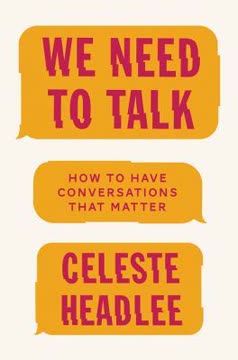
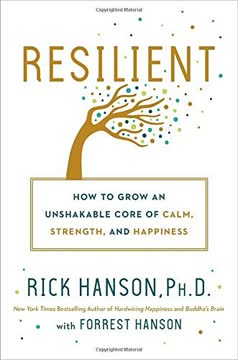
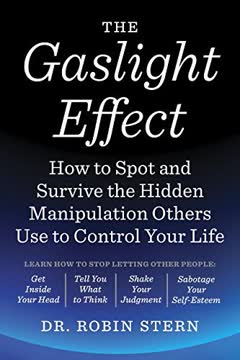
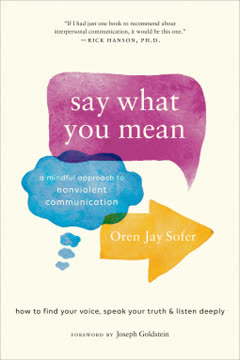

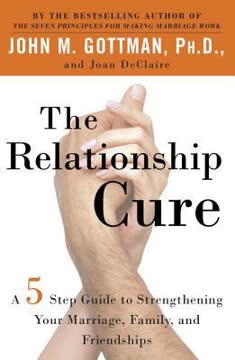


Download PDF
Download EPUB
.epub digital book format is ideal for reading ebooks on phones, tablets, and e-readers.
